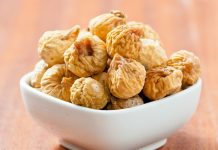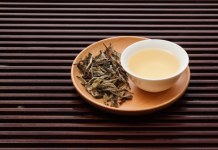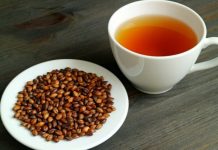The health benefits of quinoa include high protein content, good source of vitamins and minerals, presence of antioxidants and high fiber content which acts as a natural laxative.
Quinoa has been the staple food of native Americans for thousands of years before the Spanish conquest. Quinoa was grown in the Andean regions such as Ecuador, Bolivia, Colombia and Peru for thousands of years. It was also cultivated in Northern America including the United States. This was before maize and wheat were introduced to America. The name quinoa comes from the native American ‘kinwa’ or ‘Qinwah’.

Production of quinoa grain had been neglected after the Spanish conquest and after the introduction of wheat and maize. For the native Incas, quinoa was very sacred and they called it the mother of all grains. The Spanish conquerors who came to the Americas in the early 16th century almost destroyed all of quinoa under the possession of the Incas. Only few pockets of wild Quinoa remained and it was almost forgotten for more than 300 years. Quinoa regained popularity in the recent few decades. Several researches on quinoa indicated that quinoa is a wonder grain when compared to wheat, maize, corn, rice or oats. Technically speaking, quinoa is not a cereal, but it is known as a pseudo-cereal.
Nutrition in Quinoa
According to the National Nutrient Database from the United States Department of Agriculture, the nutrition found in quinoa includes
| Nutrition | Value per 100 g | Nutrition | Value per 100 g |
| Water | 13.28 g | Energy | 368 kcal |
| Protein | 14.12 g | Total Lipid | 6.07 g |
| Carbohydrates | 64.16 g | Fiber | 7 g |
| Calcium | 47 mg | Iron | 4.57 mg |
| Magnesium | 197 mg | Phosphorous | 457 mg |
| Potassium | 563 mg | Sodium | 5 mg |
| Zinc | 3.1 mg | Copper | 059 mg |
| Magnesium | 2.03 mg | Selenium | 8.5 ug |
| Thiamin | 0.36 mg | Riboflavin | 0.31 mg |
| Niacin | 1.52 mg | Pantothenic acid | 0.72 mg |
| Vitamin B-6 | 0.487 mg | Folate | 184 ug |
| Vitamin A | 14 IU | Vitamin E | 2.44 mg |
Can quinoa be served to babies?
Yes, quinoa can be served to your baby. But, it is recommended that you wait until your baby is between 8 – 10 months of age. Though, the chances of quinoa causing allergic reactions is less, it is still recommended to wait until 8 months because quinoa can be difficult for a 6 or 7 month old baby to digest. By the time your baby is around 8 months old, his or her digestive system would be strong enough to digest quinoa.
Health benefits of quinoa for babies
Here are some of the health benefits of serving quinoa for your baby.
High in proteins: Quinoa is one of those few cereals or pseudo-cereals that has good protein content. Though the protein content is not high in terms of other foods, but these proteins contain essential amino acids. These essential amino acids cannot be synthesized by the body and they need to be supplied from food source. (Ruales, Nair, 1992).
Great source of vitamins: Quinoa is a good source of vitamins such as thiamin, niacin, riboflavin, pantothenic acid, vitamin B-6, folate and vitamin E. These are some of essential vitamins needed for your baby’s development in different areas.
A very good source of minerals: Quinoa is also a very good source of minerals. It is rich in essential minerals such as calcium, iron, phosphorous, potassium, magnesium, sodium, zinc, etc. These minerals are helpful in the overall development of your baby. Calcium, magnesium and phosphorous are important for bone growth. Iron is good for hemoglobin production. Hemoglobin production, in turn helps in capturing oxygen. Potassium is a great electrolyte with least side effects, unlike sodium which is the main source of hypertension.
Supply of antioxidants: Several studies show that quinoa is a good source of antioxidants. These antioxidants are good for fighting free radicals and reducing oxidative stress in the body. Baby food consumption is very high compared to their body size and weight due to the fact that they need to grow as early as possible. Hence, high metabolism will be going on in their bodies. This metabolism results in free radical production. The major concern about free radicals is that they can result in cellular and DNA damage. This can be countered by taking antioxidants. (Nsimba, et al, 2008).
Acts as a natural laxative: The fiber content in quinoa is very high. This fiber is insoluble fiber and hence, it results in free bowel movement. Smooth bowel movement will reduce flatulence, gas and keeps your baby’s digestive system healthy. (Valencia, Serna, 2011).
Measures while serving quinoa to babies
Here are some measures that need to taken while serving quinoa to your baby.
Dehulled quinoa: From the very beginning when quinoa was consumed by native Americans, quinoa was dehulled. This is due to the fact that the hull contained saponins which made the grain bitter and uneatable. Even today, dehulling is done to avoid these saponins. While most commercial quinoa seeds are dehulled, there is a chance that if you’re buying quinoa from your local organic store or farm, makes sure that their hulls or husks are removed.
Cooking quinoa: Even after the husks have been milled, there might still be some bitterness leftover. Don’t be let down by this. Before cooking quinoa, it needs a thorough rinse in running water or soaked in water. Rub the seeds in both your hands during the rinsing process. This reduces the bitterness further to almost nothing. You can barely feel the bitterness after thoroughly rinsing the grain. The cooking does not take much time. You can cook it just like rice. The water ratio for cooking quinoa is 2:1, similar to rice. For your baby, you can add little more water, actually 2.5:1 for a puree like consistency. You can soak quinoa for about 2 hours or so, but it works either when soaked or not. You could add any broth while cooking quinoa as it brightens up the taste. But avoid it for the first few times to make sure about food allergies.
Avoid salt: Some recipes suggest adding salt while cooking quinoa. This is not a good idea, especially if you’re feeding your baby. Pediatricians suggest no salt until your baby is at least 1 year old.
Quinoa allergies: As most foods, quinoa is not an allergy-free food. It can also induce allergies. So, you need to be extra careful while serving quinoa to your baby. For this, first you need to thoroughly rinse and rub quinoa to avoid any saponin content reaching into your baby’s system. Secondly, even if the saponin is fully removed, closely observe your baby’s reaction after eating quinoa. If you notice any classic or subtle symptoms of allergies, stop the feed and take your baby to pediatrician immediately. Do not add any vegetables, meats, sausages or broth while cooking quinoa, (at least for the first few times). You need to isolate what is causing the allergic reactions in the first place. You can add veggies later on, after you’re fully convinced that quinoa is safe for your baby.












